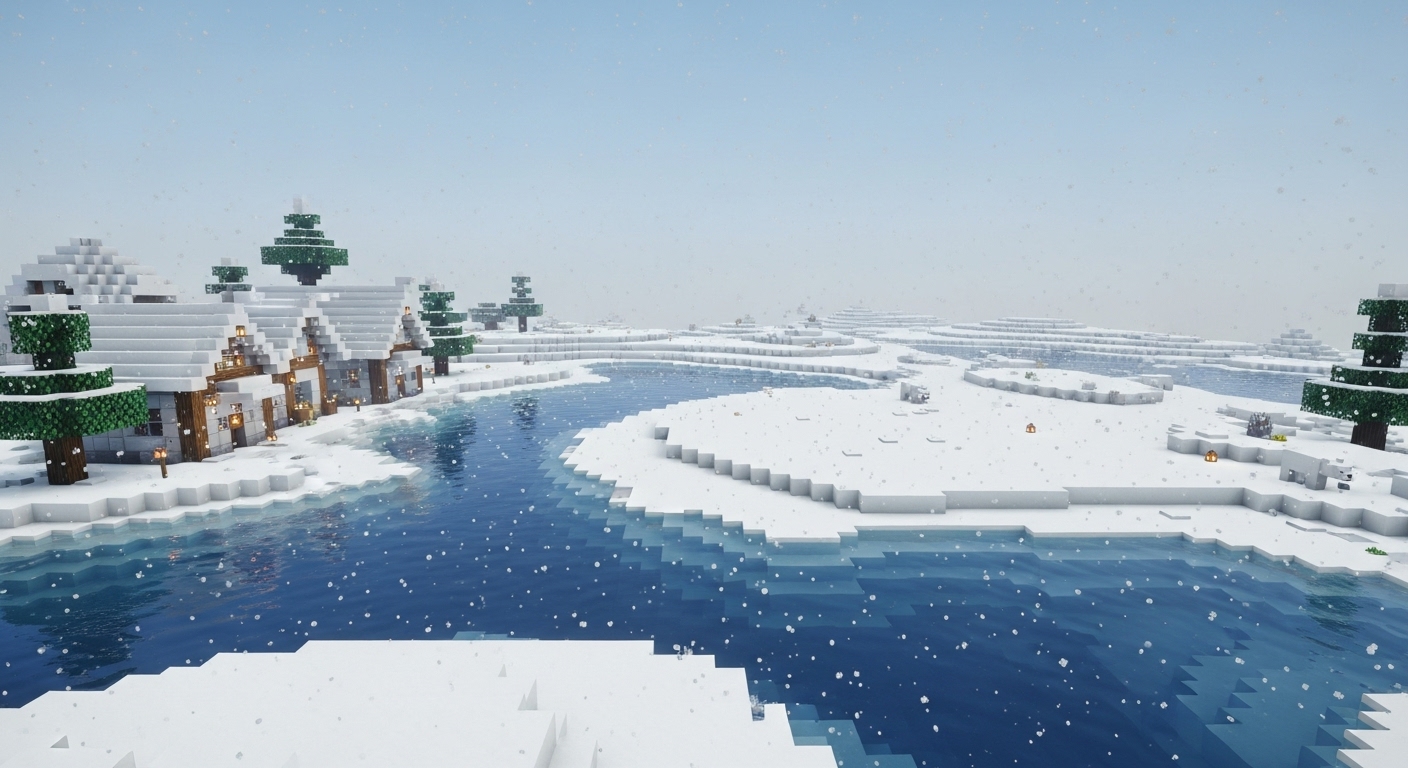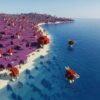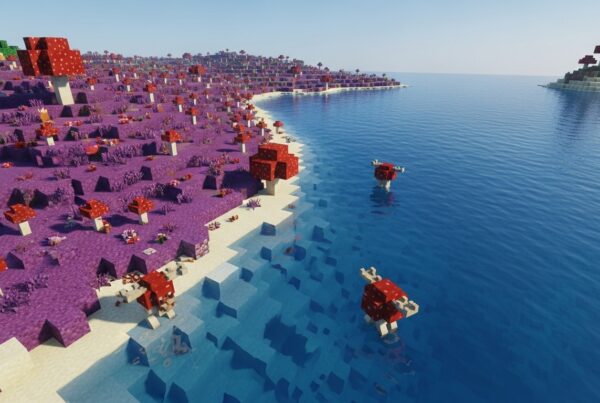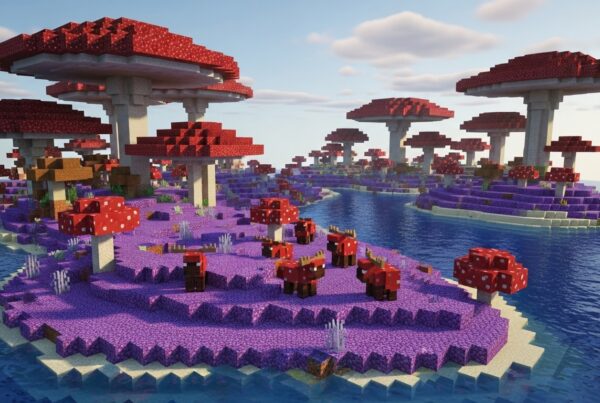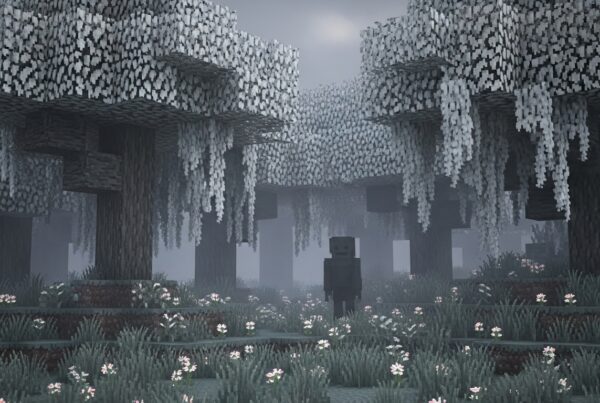The Snowy Plains biome (formerly known as Snowy Tundra and earlier Ice Plains) is one of Minecraft’s classic cold-climate biomes, defined by its flat frozen terrain, constant snowfall, and challenging survival conditions. While it may appear peaceful at first glance, the Snowy Plains hides unique dangers—most notably strays—and surprising opportunities, such as snowy villages, igloos, and rare resources like packed ice and blue ice (in variants).
This comprehensive guide explains everything you need to know about the Snowy Plains biome, including terrain, mobs, structures, resources, survival strategies, biome variants, and Java/Bedrock differences.
Snowy Plains Biome Overview
Location & Climate
Snowy Plains generate in cold regions of the overworld and often appear next to Frozen Rivers, Ice Spikes, Snowy Taiga, and occasionally Cold Ocean shores. Expect:
- Frequent snowfall
- Persistent snow layers on most blocks
- Water freezing quickly without heat or coverage
- Reduced visibility during snowstorms
Lightning does not strike naturally in this biome, making fire-related dangers extremely rare.
Terrain Features
Terrain in Snowy Plains is very similar to regular Plains but covered in snow:
- Large, flat frozen fields
- Frozen ponds, lakes, and occasionally rivers
- Thin snow layers (varies by location)
- Sparse trees (very rare spruce generation)
- Occasional caves and surface ravines
The openness of the terrain helps daytime navigation but leaves players exposed to nighttime mobs.
Biome Naming & Variant History
Understanding earlier naming helps when referencing older seeds or guides:
- Ice Plains (very old versions)
- Snowy Tundra (pre-1.18 Java)
- Snowy Plains (current official name)
Variant:
- Ice Spikes — A rare, striking sub-biome featuring tall packed ice spires and abundant ice-based resources.
Blocks, Vegetation & Natural Resources
Common Blocks
- Snow layers & snow blocks
- Ice & packed ice
- Grass blocks (hidden under snow)
- Dirt and coarse dirt
Vegetation
While earlier versions had almost no vegetation, modern Snowy Plains can generate small amounts of:
- Tall grass
- Dandelions & poppies (rare)
- Extremely rare spruce trees (edge cases or variant overlaps)
Resources You Can Gather
- Snowballs → snow blocks, snow golems
- Ice & packed ice (Silk Touch required)
- Blue ice (in Ice Spikes)
- Rabbit meat, hide, and rabbit’s foot
- Stray drops (arrows of slowness, bones, bows)
Blue ice and packed ice are particularly valuable for high-speed boat highways.
Structures Found in Snowy Plains
Snowy Villages
A major advantage of settling in Snowy Plains is the chance to encounter a snowy village, featuring:
- Igloo-style houses with spruce materials
- Snow-clad farms (which require thawing to function)
- Villagers in winter clothing
- Useful loot: food, crafting tables, beds, emeralds, and basic tools
Villages solve the wood and food scarcity problem immediately.
Igloos
Igloos may generate with or without a hidden basement. Basement igloos include:
- Brewing stand
- Splash Potion of Weakness
- Golden Apple
- Zombie villager + regular villager (tutorial for villager curing)
This makes Snowy Plains one of the easiest biomes for early-game librarian trading.
Other Structures
Depending on world generation, Snowy Plains may also feature:
- Ruined Portals
- Pillager Outposts
- Mineshafts and caves beneath the surface
Mobs That Spawn in Snowy Plains
Passive Mobs
- Rabbits (snow variant)
- Polar bears (can be neutral or aggressive if cubs are present)
- Cats (within villages)
Neutral Mobs
- Wolves (uncommon, but possible)
Hostile Mobs
All normal overworld mobs spawn here at night, plus biome-specific:
- Strays
- Shoot arrows of Slowness
- More dangerous in snowstorms
- Blend into the snowy terrain
Creepers and skeletons are harder to see against the white landscape, increasing danger.
Survival Challenges in the Snowy Plains
1. Wood Scarcity
Unless your spawn is near a Snowy Taiga or you find a village, wood is scarce. Even the biome’s rare spruce tree spawns aren’t reliable.
2. Hostile Mobs
Strays add a unique challenge, especially early game. Slowness arrows can prevent escape or make melee combat difficult.
3. Weather Hazards
- Water freezes instantly if exposed
- Snow layers slow movement
- Ice causes sliding
- Snowstorms worsen visibility
- Powder Snow (in nearby mountain patches) can freeze players if no leather armor is worn
Best Survival Tips for Snowy Plains
Come Prepared with Starter Supplies
Bring:
- Wood and sticks
- Torches
- Food
- Bed
- Basic tools
This avoids early starvation or inability to craft essentials.
Use Villages as Survival Hubs
A snowy village offers:
- Immediate shelter
- Renewable food
- Beds for skipping nights
- Crafting and smelting stations
- High-value trading potential
Protect crops with torches, lanterns, or glass greenhouses to prevent freezing.
Prevent Water from Freezing
To keep farms alive:
- Place torches, glowstone, or lanterns near water
- Cover water with slabs, trapdoors, or lily pads
- Build indoor farms using glass or solid roofs
Create Snow Golems
These can distract mobs and serve as early perimeter defenders. Snow golems leave snow layers behind, helping you collect even more snow.
Build Safe Pathways
Prevent slipping by replacing ice with:
- Wooden planks
- Cobblestone
- Packed ice highways (for controlled boat travel)
Exploration Tips
How to Locate Snowy Plains
You’re most likely to find Snowy Plains near:
- Frozen Rivers
- Snowy Taiga
- Ice Spikes
- Cold Ocean or Frozen Ocean shores
What to Bring When Exploring
- Plenty of food
- Torches
- Silk Touch pickaxe (for ice harvesting)
- Extra armor for stray encounters
- A boat for frozen river travel
- Leather boots (protection from powder snow)
Snowy Plains vs. Other Snow Biomes
| Biome | Terrain | Trees | Unique Mobs | Key Structures | Resources |
|---|---|---|---|---|---|
| Snowy Plains | Flat snowy fields | Very rare spruce | Strays, polar bears | Villages, igloos | Ice, snow, rare blue ice (variant) |
| Snowy Taiga | Forested & hilly | Spruce everywhere | Wolves | Villages, outposts | Wood, berries |
| Ice Spikes | Tall packed-ice formations | None | Strays | Igloos (rare) | Packed ice, blue ice |
| Frozen River | Narrow icy waterways | None | Standard overworld mobs | None | Ice |
Java vs. Bedrock Differences
While largely similar, a few distinctions exist:
Naming
- Java used Snowy Tundra before changing to Snowy Plains
- Bedrock sometimes references older names depending on version
Mob Spawns
- Spawn weights for strays, wolves, and polar bears differ slightly
- Bedrock tends to have more consistent stray spawning in cold biomes
Structures
- Snowy Villages generate similarly across editions
- Igloo generation rate can differ slightly between seeds/versions
Fun Build Ideas for Snowy Plains
The Snowy Plains biome is perfect for winter-themed builds, such as:
- Nordic or Scandinavian-style villages
- Ice-themed castles or fortresses
- Holiday towns with spruce decorations
- Snowball arenas and winter mini-games
- Frozen outposts or explorer camps
The wide terrain gives you space to build large structures with minimal terraforming.
Conclusion
The Snowy Plains biome combines beauty, challenge, and useful structures in a way few other biomes do. With its snow-covered fields, igloos, unique villages, and icy resources, it’s an excellent place for creative builders and survival players willing to face freezing weather and stray skeletons.
Go prepared, take advantage of villages, and embrace the frozen landscape—you’ll find that the Snowy Plains can become one of the most rewarding cold biomes in Minecraft.
